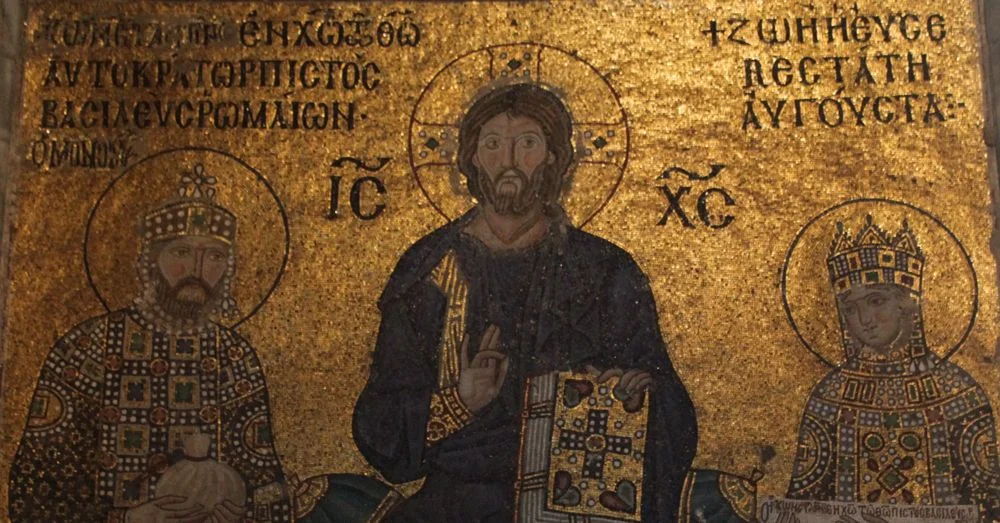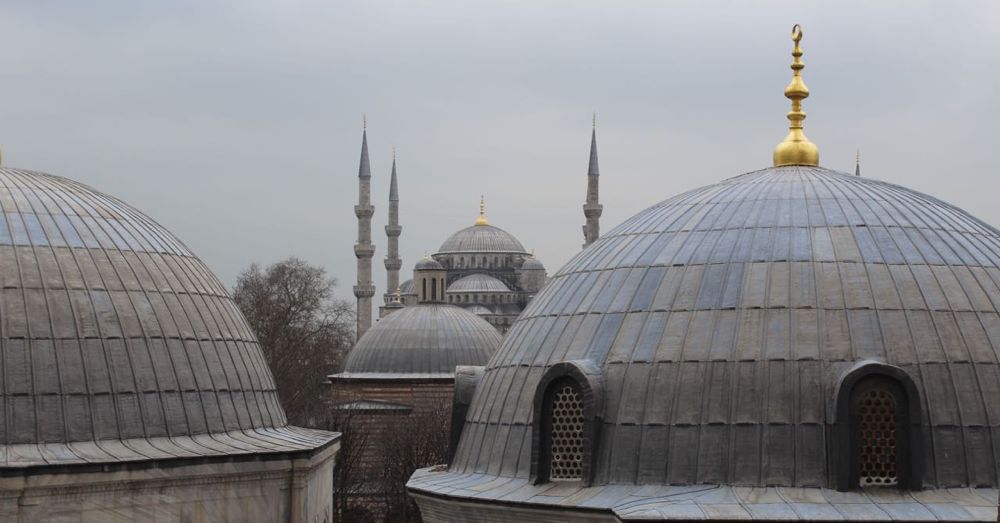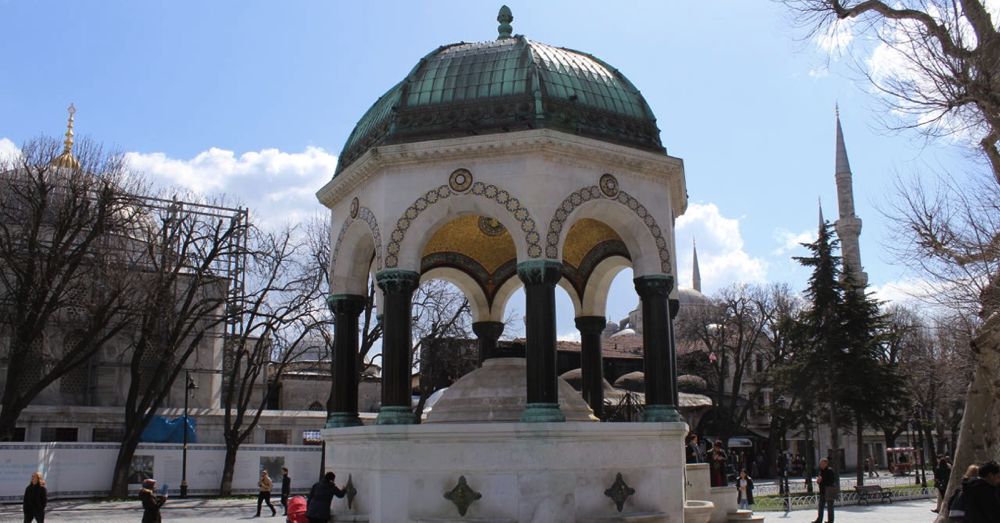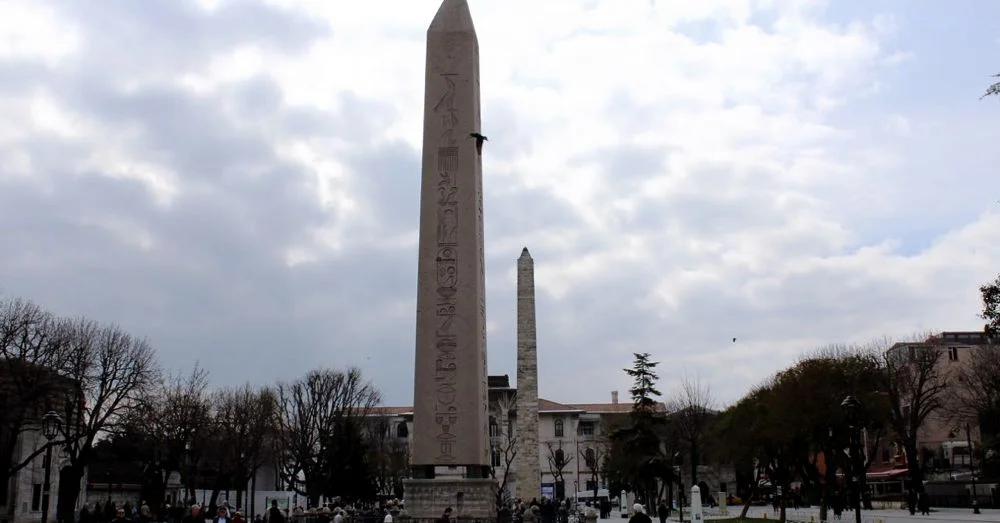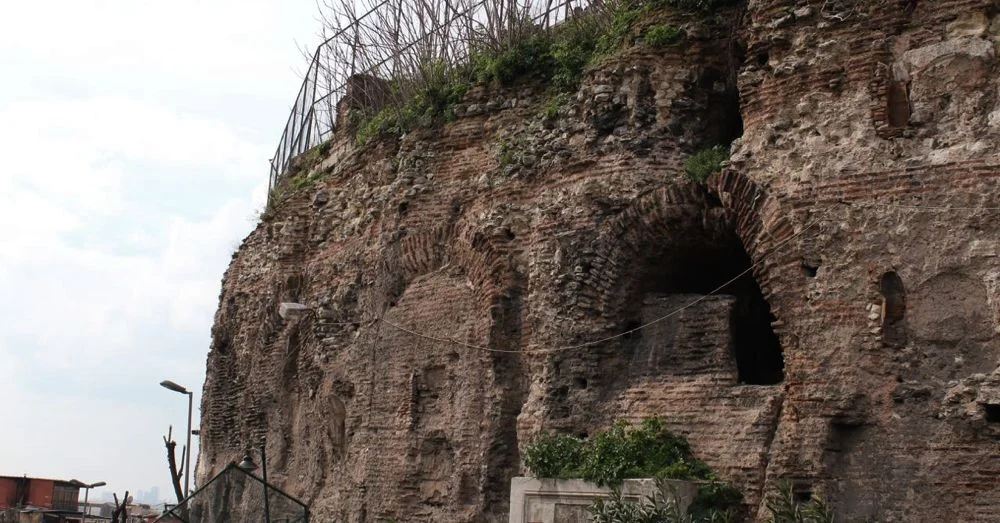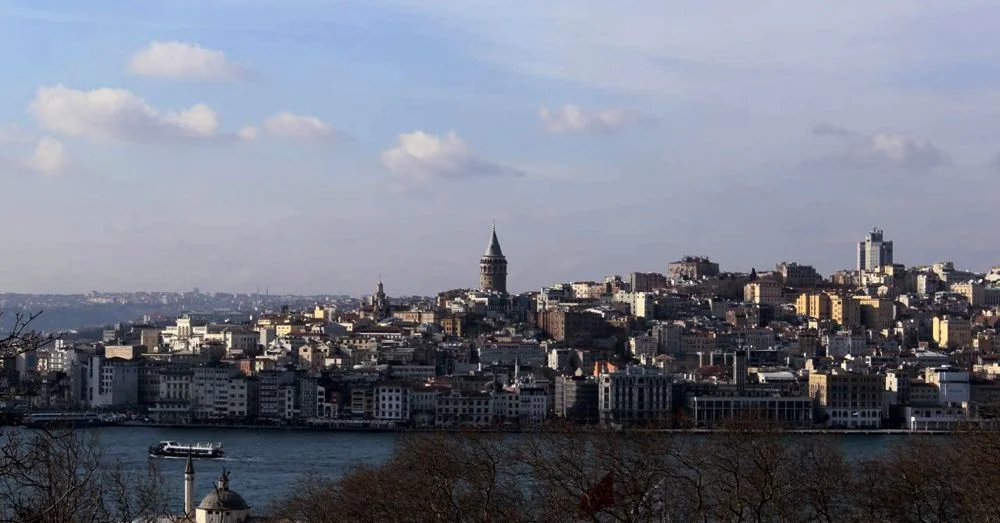Everywhere You Look ... History
There's a lot to see in Istanbul. You can't walk down the street without running into something historic, notable, or simply amazing. We spent a few days exploring the city and we barely scratched the surface. But that was okay. After the hectic pace of India, it was nice to slow down and move at a more relaxed pace for a few days. We did see some incredible things, though.
Hagia Sofia (Ayasofya)
The Hagia Sofia (Ayasofya in Turkish) was originally built as a church, and it reigned as the largest cathedral in the world until the Ottomans conquered Constantinople and turned it into a mosque. The building that stands in Sultanahmet Square today is actually the third version, built by Emperor Justinian in the mid-530s. The previous two versions had been burned down.
Inside the Hagia Sofia
The Hagia Sofia is notable for having both Christian iconography Muslim elements in its architecture and decoration.
Many people donated money to the Hagia Sofia over the years, and some of those donated so much, they were honored with portraits or mosaics of themselves, often next to an important figure (like Jesus).
After the Turks took over, the Hagia Sofia was converted into Istanbul's primary mosque until 1616, when the Sultan Ahmet Mosque (better known as the Blue Mosque) opened nearby. The mosque days of the Hagia Sofia mosque were officially over in 1931, when it was closed. It re-opened in 1935 as a museum.
One of the features I enjoyed most was the viking graffiti on one of the stone railings on the second level. It looks like some viking stood there and scratched out some words while Looking out over the main floor below. We didn't get an image of it, but The Viking Rune has the whole story.
German Fountain
Built to honor a visit from German Emperor Wilhelm II in 1898. It was built in Germany and transported piece by piece to Istanbul where it was assembled on this site in 1900. It was officially opened on January 27, 1901—Wilhem II's 42nd birthday.
Hippodrome (of Constantinople)
Originally built way back in the days of Septimus Severus (when the city was still called Byzantium) as a chariot racing venue, the U-shaped Hippodrome was later expanded to be nearly a quarter mile long by Constantine the Great. It served as the social center of Constantinople and the chariot races, which were watched by as many as 100,000 screaming fans, were often divided along political party lines. Sometimes the races were so intense that riots broke out across the city (that's how the second Hagia Sofia got burned down).
Today, the paved roads in Sultanahmet Square roughly correspond to the chariot racing track, but all that remains of the once grand Hippodrome of Constantinople are a few landmarks that stood in the structure's center (called the spina)—the Obelisk of Theodosius, the Serpent Column, and the Walled Obelisk—and the remnants of the Sphendone, the structure's semi-circular southern wall.
Serpent Column
One of the oldest monuments in the world (dating back to 478 BC), this bronze column was brought to Constantinople by Constantine the Great from the Temple of Apollo at Delphi. The column stood eight meters tall and was topped by three serpent heads that were thought to support a golden cauldron (lost in 1700). Only one of the heads remains and is on display at the Istanbul Archaeology Museum (which we didn't visit).
Walls of the Spehndone
The outer walls of the Hippodrome, a semi-circular section of the giant structure known as the Sphendone, still stand just to the southwest of Sultanahmet Square. It's a short walk down a hill to see them, and it's worth the trek. The construction is quite impressive.
Million Stone
We discovered the Million Stone totally by accident. We'd gotten some kebabs for lunch and found a nice bench to eat them at, which made a local cat very happy, as can be seen here:
When we were done eating, we stood up, turned around, and saw this giant concrete pillar sticking out of the ground. It's almost unnoticeable from the street level, but quite obvious from the platform above the Basilica Cistern. But what is it?
According to the plaque mounted nearby, the Million Stone was the starting point (kilometer zero) of the great Roman road Via Egnetia that led to Europe.
Valens Aqueduct
Istanbul is surrounded by water, but it's mostly undrinkable salt water. So getting fresh water for an entire city was a problem, at least until the Romans showed up. They employed that Roman know-how to built a series of aqueducts to bring fresh water into the city. A rather sizable section of the aqueducts still stand, right in the heart of modern Istanbul.
We took the metro tram (using the Istabulkart) to see the remnants of the Valens Aqueduct, part of what was more than 250 kilometers of a delivery system that brought water into the into Istanbul's underground cisterns, like the Basilica Cistern. Construction was started by emperor Hadrian way back when the city was still called Byzantium, and was eventually completed under Emperor Valens (hence the name) in 368.
Ortaköy Mosque
One evening we went out to meet some family friends in the Ortaköy neighborhood. We took the tram again, this time to the end of the line. From there we walked the rest of the way to the Ortaköy pier, which is dominated by the Ortaköy Mosque.
This mosque was built by two Armenian architects in the 18th century. I don't know much more than that, other than it's a frequently photographed mosque, due in part to its proximity to the Bosphorous Bridge behind it. Plus, it looks really fantastic when the sun goes down.
Also of note, this is near where we had our first Turkish ice cream from Mado. It wouldn't be our last ...
Topkapi Palace
Although this is a vast museum today, at one time it was the home to the Ottoman Sultans for a great majority of their reign.
There's so much to see inside the walls of Topkapi Palace. We spent a few hours wandering around the various gardens, galleries, and grand courtyards of the palace. Photographs aren't allowed in any of the galleries (but some people snapped a few anyway), but we managed to see such relics as Moses's Staff, David's Sword, Abraham's Saucepan (always wondered where that ended up), and the Golden Arm Casing of John the Baptist. There were also a lot of other weapons, including Mohammed's swords and fancy bow. And there were a lot of other relics that were attributed to Mohammed, including a footprint, a tooth, a hair from his beard, and his cloak.
The lines to get into the different galleries (and the bathrooms) were long. It took some time to pass through them as people admired all the artifacts, relics, and gems that were on display behind velvet ropes and plexiglass.
We saw the Topkapi Dagger, which is an emerald-and-diamond-encrusted weapon of opulent craftsmanship initially intended as a gift to Shah of Persia (who was assassinated before it could be gifted) and the really huge Kasikci Diamond (also known as the Spoonmaker's Diamond), the origins of which are surrounded by myth and legends—one of which even involves Napoleon.
In addition to all the exhibits, the palace offers great panoramic views of the Bosphorous and the Golden Horn, including the Galatea Tower.
Galatea Tower, which was newly built in 1348 to replace the old tower that was destoryed during the Fourth Crusade. The new one is a noticeable city landmark and was as a jumping point for Ottoman aviator Hezârfen Ahmed Çelebi (the predecessor of today's BASE jumpers) and as a fire-spotting tower.
From there we toured through the section of the palace that was once the residence of the Sultan and got to see his breakfast nook (which I thought I photographed but can't find), the equisite tile work of the Baghdad Pavilion, and, finally, the the horror of the circumcision room, which one of the later Sultans built to host his sons' circumcision parties, which apparently went on for days.
It's really hard to see everything the palace has to offer in a single day—unless it's a really long day. And, as much as we were enjoying Istanbul, the weather was still a little brisk. So we opted out of the harem section of the castle, which would have cost an extra 45 lira apiece.
Künefe
Somewhere in our days in Istanbul, we tried Künefe, a Turkish dessert that is Turkish cheese covered with shredded wheat of some type and cooked in a sweet syrup then topped with crushed pistachios. Before we ate one, we assumed they were savory. But that misconception was banished with the first bite. As one Turk told us, "We Turks like our sweets." Indeed they do.

Tom Fassbender is a writer of things with a strong adventurous streak. He also drinks coffee.





